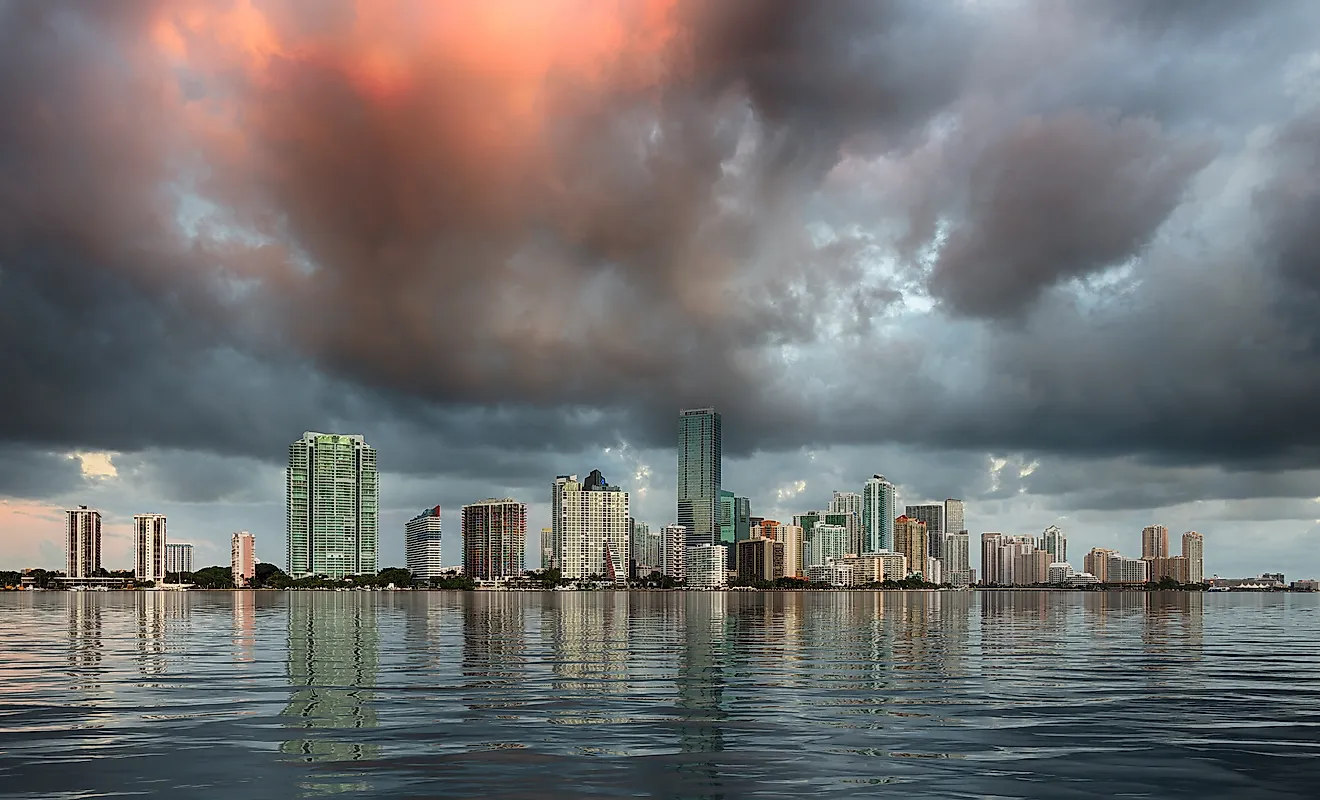Accelerating Sea Level Rise: Threat To Coastal Cities And Towns

Table of Contents
Causes of Accelerating Sea Level Rise
Several interconnected factors contribute to the alarming rate of accelerating sea level rise. Understanding these causes is the first step towards effective solutions.
Thermal Expansion
Warming ocean temperatures are a primary driver of sea level rise. As the Earth's climate warms due to increased greenhouse gas emissions, the ocean absorbs a significant amount of this excess heat. This heat causes the water molecules to move faster and further apart, leading to thermal expansion—an increase in the volume of water. This expansion, even without additional water from melting ice, contributes significantly to rising sea levels.
- Regions experiencing significant thermal expansion include the tropical Pacific and Indian Oceans, where ocean temperatures have risen most dramatically.
- The relentless increase in greenhouse gas emissions, primarily carbon dioxide from the burning of fossil fuels, is the main culprit behind this warming trend.
Melting Glaciers and Ice Sheets
The melting of glaciers and ice sheets in Greenland and Antarctica is another major contributor to accelerating sea level rise. These massive ice bodies contain enough frozen water to significantly raise global sea levels if they were to melt completely. The rate of melting is accelerating due to rising global temperatures.
- Glaciers in Alaska, the Himalayas, and the Andes are receding rapidly, adding considerable volumes of meltwater to the oceans.
- The Antarctic and Greenland ice sheets are losing mass at an alarming pace, contributing significantly to the observed increase in global sea levels. Studies show the rate of ice loss is far exceeding earlier projections.
Groundwater Extraction
Excessive groundwater extraction, particularly in coastal regions, contributes to land subsidence. This process causes the land to sink, effectively lowering the relative elevation of the land in comparison to the sea level, making coastal communities more vulnerable to flooding.
- Coastal areas in Southeast Asia, California, and parts of the Middle East are experiencing significant land subsidence due to excessive groundwater pumping.
- This human-induced land subsidence exacerbates the effects of sea level rise, increasing the risk of flooding and saltwater intrusion.
Consequences of Accelerating Sea Level Rise for Coastal Communities
The consequences of accelerating sea level rise are far-reaching and devastating, impacting coastal communities in numerous ways.
Increased Flooding and Erosion
Rising sea levels lead to more frequent and severe coastal flooding events. High tides, storm surges, and even normal rainfall can overwhelm coastal defenses, causing widespread damage to infrastructure, property, and ecosystems. Coastal erosion is also intensified, leading to loss of land and habitat.
- Recent major flood events in coastal cities around the world highlight the increasing threat posed by sea level rise. The economic costs associated with these events are staggering.
- The erosion of beaches and coastlines is not only aesthetically damaging, it undermines critical natural defenses against storm surges and waves, leaving communities more exposed.
Saltwater Intrusion
As sea levels rise, saltwater intrudes into freshwater aquifers, contaminating drinking water supplies and harming agriculture. This has profound implications for human health and food security.
- Coastal regions in many parts of the world are already experiencing significant saltwater intrusion, forcing communities to find alternative sources of freshwater.
- The contamination of agricultural lands by saltwater renders them unproductive, impacting food production and livelihoods.
Displacement and Migration
The inevitable consequence of increased flooding, erosion, and saltwater intrusion is displacement and migration. Millions of people living in low-lying coastal areas will be forced to leave their homes, creating social and economic challenges on an unprecedented scale.
- Low-lying island nations and coastal communities in developing countries are particularly vulnerable to displacement due to sea level rise.
- The challenges of climate migration, including the strain on resources and infrastructure in receiving areas, are already becoming apparent.
Mitigation and Adaptation Strategies
Addressing accelerating sea level rise requires a multi-pronged approach involving both mitigation and adaptation strategies.
Reducing Greenhouse Gas Emissions
The most critical step in addressing accelerating sea level rise is to drastically reduce greenhouse gas emissions. Transitioning to renewable energy sources, improving energy efficiency, and implementing sustainable land-use practices are essential.
- Climate mitigation policies, such as carbon pricing and investment in renewable energy technologies, are crucial for slowing the rate of sea level rise.
- International agreements like the Paris Agreement aim to curb greenhouse gas emissions globally, but stronger commitments and faster action are needed.
Coastal Protection Measures
Protecting coastal communities from the impacts of sea level rise requires a range of measures. Building seawalls, restoring coastal wetlands, and implementing managed retreat strategies are all important considerations.
- Successful coastal protection projects around the world demonstrate the effectiveness of various engineering and nature-based solutions.
- The costs and benefits of different approaches must be carefully weighed, considering both economic factors and ecological impacts.
Improved Urban Planning and Infrastructure
Incorporating sea level rise projections into urban planning and infrastructure development is essential for building resilient coastal communities. Sustainable urban design principles, such as elevating critical infrastructure and incorporating green spaces for storm water management, are crucial.
- Sustainable urban design principles can minimize the vulnerability of coastal cities to the effects of sea level rise and reduce the economic costs of damage.
- Investing in resilient infrastructure that can withstand extreme weather events and rising sea levels is a critical investment in the future.
Conclusion
Accelerating sea level rise poses a grave threat to coastal communities worldwide. The causes are multifaceted, stemming from greenhouse gas emissions, melting ice, and human activities like groundwater extraction. The consequences, including increased flooding, saltwater intrusion, and displacement, demand immediate and decisive action. Mitigation efforts, such as reducing greenhouse gas emissions, are crucial for slowing the rate of sea level rise. Simultaneously, adaptation strategies, including coastal protection measures and resilient urban planning, are vital for protecting vulnerable communities. Understanding and addressing accelerating sea level rise is crucial for the future of coastal communities. Learn more about the issue and get involved in local and global efforts to combat climate change and build more resilient coastal communities. We must act now to protect our coastlines and the people who call them home from the devastating impacts of rising sea levels.

Featured Posts
-
 Ufc 315 Revised Fight Card After Aldos Weight Failure
May 11, 2025
Ufc 315 Revised Fight Card After Aldos Weight Failure
May 11, 2025 -
 Tennessee Baseball Alberto Osunas Ineligibility Confirmed For 2025 Season
May 11, 2025
Tennessee Baseball Alberto Osunas Ineligibility Confirmed For 2025 Season
May 11, 2025 -
 Analys Thomas Muellers Potentiella Oevergang Till Mls
May 11, 2025
Analys Thomas Muellers Potentiella Oevergang Till Mls
May 11, 2025 -
 Crazy Rich Asians Tv Series Jon M Chus Max Project
May 11, 2025
Crazy Rich Asians Tv Series Jon M Chus Max Project
May 11, 2025 -
 Analysis The True John Wicks Limited Screen Time Across Four Films
May 11, 2025
Analysis The True John Wicks Limited Screen Time Across Four Films
May 11, 2025
